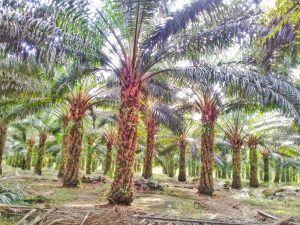As the world’s largest producer of palm oil, Indonesia has sought to capitalize on the commodity’s use as an alternative source of renewable energy through the adoption of biodiesel, a blend of palm oil and fossil fuel-based diesel. The country’s biodiesel policy was first implemented in 2008, starting with a 2.5 percent biodiesel blend (B2.5). Over the years, the proportion of palm oil in the biodiesel blend has gradually increased, with the current mix sitting at 35 percent (B35).
Leveraging its vast palm oil reserves, the country plans to increase the biodiesel blend mandate to 40 percent starting next year. Additionally, President-elect Prabowo Subianto has also set an ambitious target to introduce a B50 biodiesel blend within the next five years, aiming for implementation by 2029.
Indonesia’s biodiesel initiatives aim to reduce its reliance on imported fossil fuels, boost domestic palm oil consumption, and support the agricultural sector. These efforts are also part of the country’s broader strategy to reduce carbon emissions and transition towards renewable energy while promoting both economic and environmental objectives. However, Indonesia’s plan to increase the biodiesel blending ratio in the coming years has raised concerns about the global palm oil supply chain, given the nation’s significant role in the industry.
In 2023, Indonesia produced 46 million tonnes of palm oil, representing 59 percent of the global market. The Indonesia Palm Oil Association (GAPKI) reported that out of 23.2 million tonnes of domestic consumption last year, 45.9 percent was used for biodiesel, followed by 44.4 percent for food, and 9.7 percent for oleochemicals, such as cosmetics, household, and industrial products. This marked the first time that biodiesel consumption of palm oil surpassed its use for food, raising alarms about food security, especially given the cooking oil scarcity experienced in 2022.
GAPKI noted that the implementation of the B35 mix has increased palm oil consumption for biodiesel by 17.68 percent, from 9.048 million tons in 2022 to 10.65 million tons in 2023. With the B40 mandate set to begin next year, the Indonesia Biofuel Producer Association expects it will drive up crude palm oil (CPO) consumption further to 14 million tonnes for biodiesel.
Despite assurances from the Ministry of Agriculture that it will maintain adequate supply while handling the increase of the biodiesel mandate, concerns persist that the rise in production figures has not kept pace with growing consumption.
While the government has been pushing to increase domestic CPO consumption through biodiesel blends over the past few years, Statistics Indonesia (BPS) showed that the country’s palm oil production remained relatively stagnant with only less than 1 percent annual growth since 2020. Last year’s production outputs were also still lower than the 47.1 million tonnes produced in 2019, the last full year before the COVID-19 pandemic.
At the same time, according to a GAPKI report, the compound annual growth rate of domestic palm oil consumption from 2019 to 2023 has surged to 8.5 percent. Moreover, palm oil consumption for biodiesel has increased significantly by 17.5 percent annually for the same period, while food consumption grew by only 1 percent.
With the increase in domestic consumption, particularly for biodiesel, and static production levels, the government may have two options to address the issue: tightening export quotas for CPO products and increasing domestic palm oil production.
Palm oil is one of Indonesia’s top export commodities, alongside nickel and coal, with its trade value reaching $25 billion last year. However, the country has experienced a decrease in palm oil exports, falling from 33.1 million tonnes in 2022, when the B35 mandate was fully implemented, to 32.2 million tonnes in 2023. Part of this, too, is the slowing demand from European countries concerned about the social and environmental impacts of Indonesian palm oil, especially the Netherlands, Spain, and Italy, which are among the country’s top 10 palm oil export destinations.
While there has been no official statement from the government yet, it is anticipated that export quotas for palm oil and its derivative products will be tightened to meet domestic consumption needs if production yields remain sluggish. This move aligns with the Indonesian government’s previous actions, such as the temporary palm oil ban in 2022, which demonstrated a preference for prioritizing domestic consumption over exports.
Indonesia’s top three palm oil export destinations – India, China, and Pakistan – rely on Indonesian palm products for their vegetable oil consumption. The three countries collectively made up 46.7 percent of Indonesia’s total exports last year.
With the potential for stricter domestic policies in Indonesia, tighter export regulations could prompt countries to seek alternative commodities from other palm oil producers, such as Malaysia or other suppliers. This shift could lead to a potential shortage of palm oil in the global market, driving up prices and affecting industries and consumers worldwide.
Another potential measure for the Indonesian government is to increase domestic palm oil production while upholding rigorous environmental standards. Despite the government’s 2018 moratorium on the establishment of new oil palm plantations in peatland areas, BPS data shows an increase in plantation areas, attributed to the expansion of “registered” large private plantations.
Although recorded data indicates a slight expansion in plantation areas, national palm oil productivity has been declining. In 2019, 14.46 million hectares of plantations yielded 47.12 million tonnes of palm oil. However, in 2023, only 46.9 million tonnes were produced from a larger area of 15.43 million hectares. This slowdown in productivity is also attributed to aging trees in the country’s palm oil plantations, which result in declining yields.
While Indonesia’s push towards biodiesel is commendable, the government must carefully navigate the complexities of the palm oil supply chain and its overarching global impact. A strategic balance is essential to meet domestic demands and safeguard the global market while preserving the economic stability of the palm oil sector. By doing so, Indonesia can achieve its ambitious energy goals through the adoption of biodiesel without compromising the broader economic and environmental consequences of its vital palm oil industry.

































